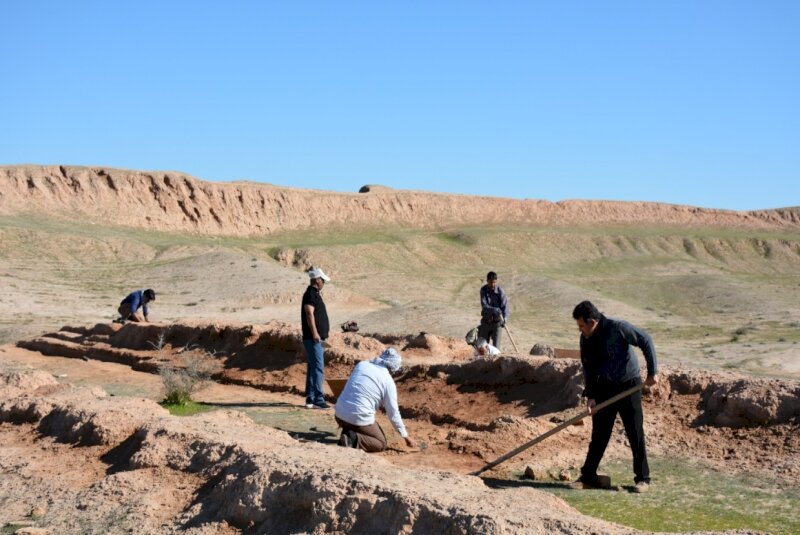Archaeological survey starts on ruined palaces of Tchogha Zanbil

TEHRAN – A team of archaeologists and cultural heritage experts have commenced a comprehensive survey on the ruined palaces of Tchogha Zanbil, which is a UNESCO-registered prehistorical site in southwest Iran.
“For years, the semi-eastern buildings in Tchogha Zanbil had been abandoned…. and annual conservation and restoration measures, such as those carried out on the ziggurat and surrounding temples, did not include those [eastern] buildings,” CHTN quoted, Atefeh Rashnoei, director of the World Heritage, as saying on Monday.
Remnants of all buildings, structures and relics, which are scattered across “the ancient city of Tchogha Zanbil” are of very high significance therefore this new archaeological survey aims to probe [ruined] palaces within the complex, the official explained.
In August, a digital mapping project was implemented on Tchogha Zanbil and its nearby archaeological site, Haft-Tappeh, using an advanced low altitude unmanned aerial vehicle (UAV).
Haft-Tappeh (literary meaning “Seven Mounds”) is located 15 kilometers to the south of the ancient city of Susa, itself a highly significant archeological site in southwest Iran. Early excavations in Haft-Tappeh conducted by the late Iranian archaeologist Dr. Ezzatollah Negahban yielded a large number of petroglyphs bearing cuneiform inscriptions in Akkadian, belonging to Elamite kings. The petroglyphs contain information on the religious beliefs, trading methods, and the political, cultural, and social relations of the time.
UNESCO-listed Tchogha Zanbil is widely known as the world’s best surviving example of Elamite architecture. The ruined ziggurat stands in Khuzestan province, southwest Iran. It was made a UNESCO site in 1979.
According to UNESCO, Tchogha Zanbil is the largest ziggurat outside of Mesopotamia and the best preserved of this type of stepped pyramidal monument. Lonely Planet says that even if you’re not a fan of ancient ruins, the great bulk and splendid semi-desert isolation of the site can’t fail to impress. Try to catch it in the soft, golden light of late afternoon rather than the harsh midday sun.
The ziggurat is located approximately 30 km southeast of Shush and 80 km north of Ahvaz. Reaching a total height of some 25m, the gigantic monument was used to be surmounted by a temple and estimated to hit 52m during its heyday. Tchogha Zanbil was excavated in six seasons between 1951 and 1961 by Roman Ghirshman, a Russian-born French archeologist who was specialized in ancient Iran.
Ziggurats, in general, are pyramidal stepped temple towers that bear architectural and religious characteristics of the major cities of Mesopotamia from approximately 2200 until 500 BC. They were usually built with a core of mud brick and an exterior covered with baked brick. Approximately 25 ziggurats are known, being equally divided among Sumer, Babylonia, and Assyria, according to Encyclopedia Britannica.
AFM/

Leave a Comment